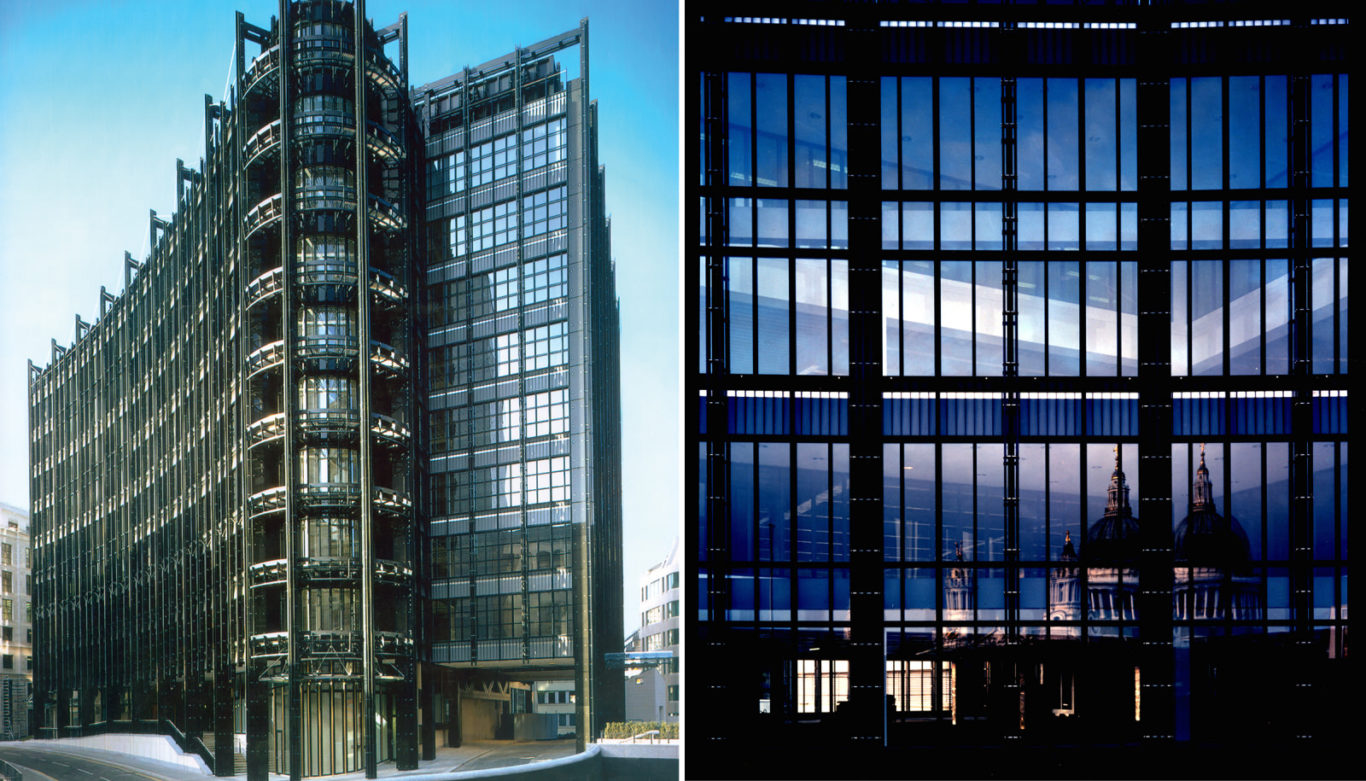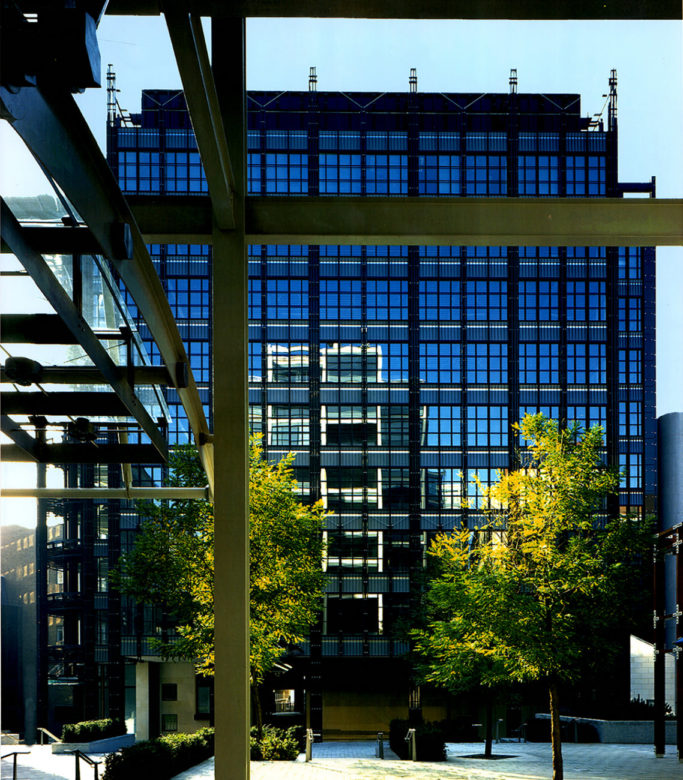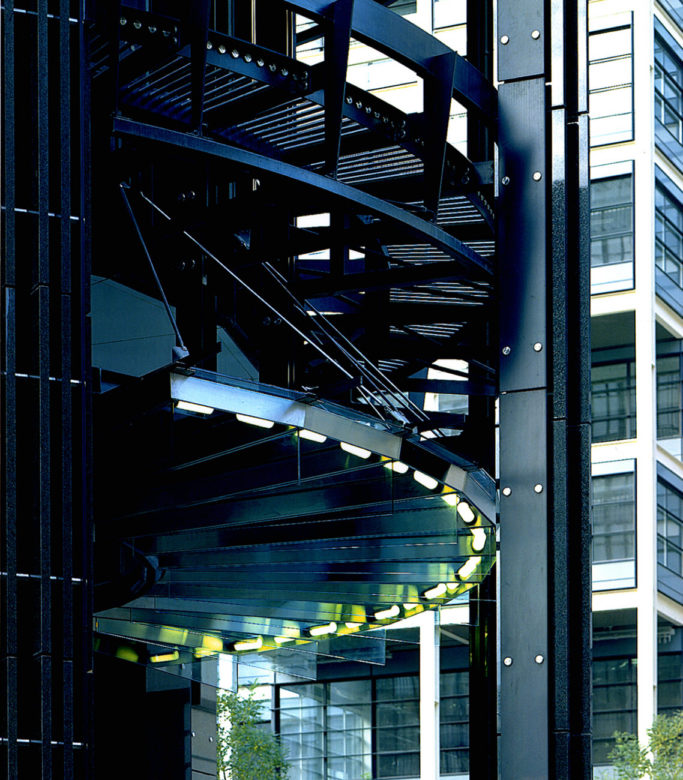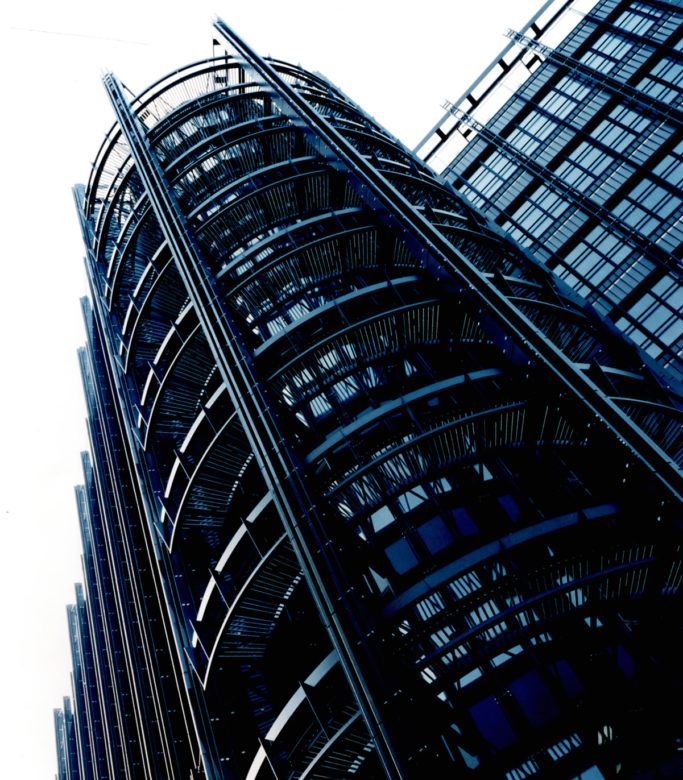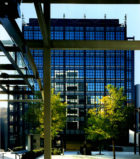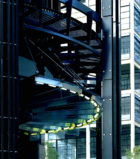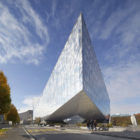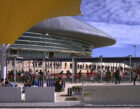As a key part of London’s Ludgate development, this distinctive building provides a visual transition between the contemporary 1 Fleet Place and the historic 100 Ludgate Hill, all designed by SOM.
Bridging the Thameslink rail line below, 10 Fleet Place is the largest building on the site. City planning officials required stone cladding to ensure that the new building was appropriate for its context, so SOM composed a facade of black granite, steel, and glass that terminates in a flying buttresses at roof level. Though its detailing is hard-edged and mechanistic, the 10-story building has a Gothic intricacy and fineness of scale.
At ground level, an arcade and stepped masonry wall hug the narrow, curved street bordering the site. A passageway cuts through the building to provide a pedestrian shortcut from the busy street to the plaza. The roughly triangular plan terminates in rounded turret-like structures, reminiscent of the traditional architecture of urban London. By combining abstraction and representation, 10 Fleet Place builds on the memory of the city’s architecture, both old and new.
